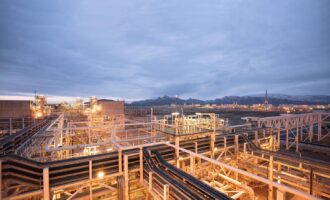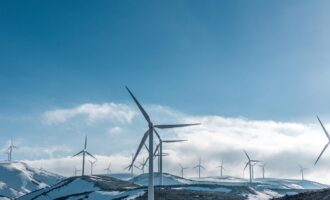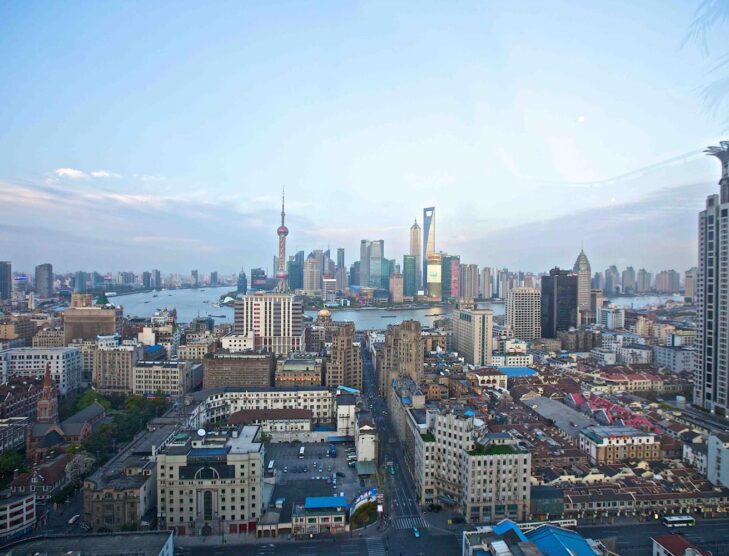
China’s path to decarbonisation comes with a hefty price tag
Increasingly, nations around the globe are taking responsibility for the impacts their activities are having on the environment—whether through the growth of manufacturing, deforestation, agriculture, or fossil fuel use. China is the largest contributor to carbon dioxide (CO2) emissions, by total volume, after it leapfrogged the United States in 2006. Per capita, China’s emissions are about half those of the carbon hungry U.S., however, China’s vast population and rampant economic growth mean it now accounts for almost one-third of the world’s total CO2 emissions.
China’s investment-focused growth model has successfully propelled it to become the second-largest economy in the world. This approach has also produced high levels of carbon and other greenhouse gas emissions—off the back of heavy-industry. The Asian country’s dependence on burning coal for energy is the major culprit.
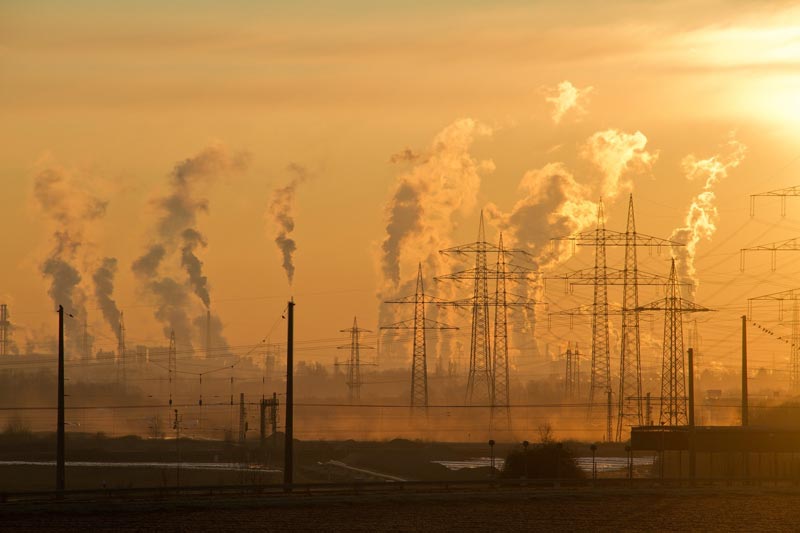
You could argue that the West has enjoyed the benefits of years of burning fossil fuel for growth and that China, later to the economic growth party, should be offered the same courtesy as a developing nation. Whatever your view, it is undeniable that China has a major role to play in addressing global warming—which poses a very real threat to economic and financial stability.
Now, China has laid its environmental cards on the table. In September 2020, during an address to the United Nations (UN) General Assembly, President Xi Jinping indicated that China was aiming to achieve carbon neutrality before 2060, with peak emissions before 2030. Though, the position was only officially confirmed ahead of the UN Climate Change Conference, COP26, in Glasgow, Scotland, in November 2021.
Aside from its headline undertaking, China has also pledged to lower its carbon intensity by more than 65% by 2030, from the 2005 level, and to increase non-fossil fuel energy consumption to a 25% share of primary energy consumption. China has also vowed to increase reforestation to 6 billion cubic metres by 2030, from 2005 levels, and is targeting a total installed capacity of wind and solar power of over 1,200 gigawatts (GW) by 2030. This is three times the renewable energy capacity of other countries. These promises follow an earlier pledge by Xi Jinping to stop building new coal-fired power plants overseas.
Striking the right balance between energy security and climate objectives is always a tricky task. Some analysts believe China’s 2030 peak is not early enough, and that carbon neutrality in 2060 places immense pressure on other nations to achieve the same feat well in advance of 2050. Climate Action Tracker, an independent scientific analysis tracking climate action since 2009, labelled China’s climate plans as “highly insufficient” and too little to restrict global warming to 1.5 degrees C.
However, China has exceeded most of its environmental targets in the five years to 2020 and has a reputation for under-promising and over-delivering on targets. Accelerating decarbonisation efforts would save costs and reduce risks of delays in achieving carbon neutrality by 2060, says the International Monetary Fund (IMF).
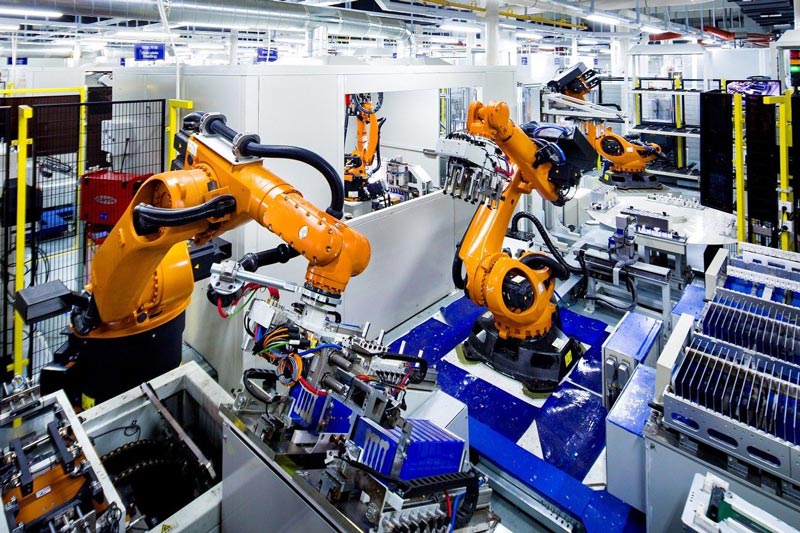
IMF is an organisation that consists of 189 member countries that works to foster global monetary cooperation, facilitate international trade and sustainable economic growth. Under Article IV of the IMF’s Articles of Agreement, a team of economists visits a country to assess the economic and financial developments and discuss policies with government and central bank officials. Usually, this occurs on an annual basis.
The 2021 Article IV consultation with the People’s Republic of China was concluded on November 10, 2021, and the Staff Report was completed on December 21, 2021. The report emphasised that China’s recovery from Covid-19 was well advanced, while citing concerns it lacks balance and the momentum has slowed. The authors attributed the withdrawal of policy support, a lagging recovery of consumption, recurrent Covid-19 outbreaks and slowing real estate investment as key contributors to slowing growth. GDP growth was projected at 7.92% in 2021 and 4.8% in 2022. The IMF report raises the question of whether slowing growth in China will impact its climate ambitions.
To protect growth, the IMF recommended adjustments to China’s macroeconomic policy including rebalancing the economy away from investment towards consumption. This move would ensure high-quality growth—growth that is balanced, inclusive and green, they say.
A key focus of the report was China’s environmental actions. The IMF outlined “strong indications that all levels of government and ministry have started the process of implementing China’s climate agenda,” with overarching working guidance on achieving carbon neutrality published, as well as a detailed carbon peaking action plan. However, the report indicates that rebalancing the economy away from investment and towards consumption will bring China closer to reaching its climate goals. Consumption, as a rule, is less carbon-intensive than investment.
But what does rebalancing mean in practice for China’s economy? A shift away from heavy industry, such as construction and metal production, towards less carbon-intensive service sectors is a key component, says the IMF. Lower energy demand would not only ease the pressure on energy security—it also means less dependence on coal. The move could deliver a 15% reduction in CO2 emissions over the next three decades, which translates to a global reduction in CO2 of 4.5%, according to the IMF.
While rebalancing can have positive impacts on the environment, it will not deliver China’s climate goals on its own. The IMF report outlined a multi-pronged approach to decarbonisation where economic rebalancing is coupled with carbon pricing tools and market-based sectoral policies. It also emphasised the importance of leveraging green finance to achieve climate goals.
China implemented its national Emissions Trading Scheme (ETS) in July 2021, and by year-end ETS trading volumes reached 178.8 million tons of carbon emission. The ETS currently covers the power sector and approximately 40% of China’s CO2 emissions. The IMF report recommends changes to the carbon pricing tool to minimise trade-offs with GDP growth including extending the ETS coverage to incorporate other high-carbon sectors such as steel, iron, and cement and the generous allocation of free and intensity-based permits. Scaling up of sectoral policies and regulations such as the “fairly modest” coal tax, and feebates (a system of charges and rebates) that deter carbon-intensive activities are also recommended. The organisation emphasises the importance of leveraging green finance to harness the power of private capital markets for financing climate investment needs.

China’s current carbon path is steep and backloaded. IMF foresees a relatively steep adjustment in a shorter period that is likely to increase overall costs. The short timeframe means China will miss out on the benefits of new helpful technology and economies of scale over a longer period, they say. There is also greater risk of delays with this approach.
However, the path to decarbonisation is not without risk and comes with a hefty price tag. The IMF report estimates investment at 1.5 to 2.0% of GDP (currently RMB2.2 trillion or USD345 billion) per year, reaching RMB3.9 trillion (USD612 billion) annual investment by 2060. The organisation also highlighted the exposure of Chinese lenders who have growing portfolios of loans to coal and other carbon-intensive firms.In a statement, Jin Zhongxia, executive director for the People’s Republic of China Executive Board, reaffirmed his country’s commitment to its climate ambitions and noted the integration of its climate efforts into a new five-year plan. At the same time, he emphasised the need for a “gradual and orderly transition towards carbon neutrality” that balances climate goals with safeguarding energy security. The plan allows carbon emissions to grow before 2030 with thermal power playing a supporting role—while new renewable energy sources are developed “vigorously”.
Zhongxia responded to the IMF proposal of an earlier emission peak in 2023 by highlighting the inherent conflict of being urged to speed up the carbon reduction process, while at the same time enduring sanctions directed at China’s solar energy production and unfair competition policies. Market trade and the transfer of new technologies have been increasingly subject to restrictions, he says.
While China is targeting carbon neutrality by 2060, the pledges of its leading oil and gas producers are far more ambitious. Sinopec, Asia’s largest oil refiner by annual volume, is targeting carbon neutrality by 2050 with a strategy that hinges on natural gas development. Hydrogen will play a central role in the energy transition. The company has confirmed its intention to build 1,000 hydrogen filling stations by 2025 with 200,000 tonnes of annual refuelling capacity. Initially based on fossil fuel hydrogen production, Sinopec expects to commission its first green hydrogen project in Ordos city, northern China in mid-2022.
PetroChina also intends to achieve net-zero emissions a full decade earlier than its government’s commitment. Peak carbon emissions are anticipated by 2025—when output of lower-carbon natural gas will reach 55% of total production. By 2035, the company expects investments in low-carbon energy projects to reach one-third of overall spending.
Meanwhile, German chemical company BASF, which recently confirmed its plan reduce its greenhouse gas emissions by 25% by 2030, said it is further accelerating its plan to power the entire Zhanjiang Verbund site with renewable electricity and targets to achieve 100% by 2025, earlier than originally planned. With the use of renewable electricity, BASF is a frontrunner in the process industry in China. Its new Verbund site in Zhanjiang, Guangdong Province, China, is its third largest in the world, after Ludwigshafen, Germany, and Antwerp, Belgium.





